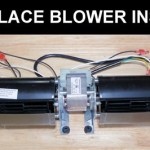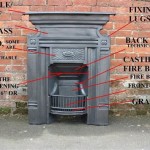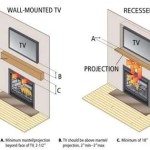Replacement Tempered Glass For Fireplace Doors: A Comprehensive Guide
Fireplaces offer warmth, ambiance, and a focal point for a living space. The doors, often featuring tempered glass, play a crucial role in safety, efficiency, and aesthetics. Tempered glass provides a barrier against sparks and embers, prevents drafts, and enhances the visual appeal of the fireplace. However, over time, fireplace door glass can crack, break, or become cloudy, necessitating replacement. Understanding the properties of tempered glass, the reasons for replacement, and the process involved is essential for fireplace maintenance.
Tempered glass is a type of safety glass processed by controlled thermal or chemical treatments to increase its strength compared with normal glass. The tempering process creates balanced internal stresses which cause the glass, when broken, to crumble into small granular chunks instead of splintering into jagged shards. This characteristic significantly reduces the risk of injury, making it ideal for applications like fireplace doors where safety is paramount.
Regular glass, also known as annealed glass, is not suitable for fireplace doors. When exposed to high temperatures, regular glass can shatter violently, posing a significant hazard. Tempered glass, on the other hand, can withstand much higher temperatures and is designed to break safely if its structural integrity is compromised. Therefore, using the correct type of glass is critical for the safe operation of a fireplace.
The thickness of the tempered glass used in fireplace doors is also important. Typically, fireplace door glass ranges from 3/16 inch to 1/4 inch thick. Thicker glass generally offers greater resistance to heat and impact. The appropriate thickness will often depend on the size of the door and the specific recommendations of the fireplace manufacturer. Consulting the manufacturer's documentation or a qualified fireplace professional is recommended when determining the correct glass thickness for replacement.
Identifying the Need for Replacement
Several factors can indicate that replacement tempered glass for fireplace doors is necessary. Obvious signs include cracks, chips, or outright breakage of the glass. Even small cracks can compromise the structural integrity of the glass and should not be ignored. The constant expansion and contraction of the glass due to heating and cooling cycles can cause cracks to worsen over time, eventually leading to failure.
Another indicator is cloudiness or discoloration of the glass. This can be caused by the buildup of soot, creosote, or other deposits on the surface of the glass. While some surface buildup can be cleaned, permanent etching or staining can occur over time, making the glass difficult to clean and obscuring the view of the fire. If cleaning efforts are unsuccessful in restoring the clarity of the glass, replacement should be considered.
Physical impact events can also necessitate replacement. A log accidentally striking the glass, or the impact of a tool used for tending the fire, can cause damage even if the initial impact doesn't result in immediate breakage. Micro-fractures may develop within the glass structure, weakening it and increasing the likelihood of future failure. A thorough inspection of the glass after any impact event is recommended.
Furthermore, gaps or looseness in the door frame surrounding the glass can indicate a problem. If the glass is not securely held in place, it is more susceptible to damage from vibration, heat expansion, and accidental impacts. Addressing problems with the door frame is often necessary in conjunction with replacing the glass to ensure a proper and safe installation.
The Replacement Process
Replacing tempered glass in fireplace doors is a task that can be undertaken by homeowners with some DIY experience, but it is essential to proceed carefully and follow safety precautions. Alternatively, a qualified fireplace technician can perform the replacement. The process typically involves several steps:
First, gather the necessary tools and materials. These may include a screwdriver (possibly with multiple head types), pliers, a putty knife or scraper, safety glasses, gloves, heat-resistant sealant (specifically designed for fireplace applications), and, of course, the replacement tempered glass. Ensure that the replacement glass is the correct size, thickness, and type (tempered) for the fireplace door.
Next, carefully remove the fireplace door from its hinges or mounting brackets. Place the door on a flat, stable surface covered with a protective material, such as a drop cloth or cardboard, to prevent scratching or damage. Proceed to remove any hardware that secures the glass in place, such as clips, screws, or retaining brackets. It is often helpful to take photographs of the hardware arrangement before disassembly to aid in reassembly.
Once the hardware is removed, carefully extract the old glass from the door frame. Use a putty knife or scraper to loosen any sealant or adhesive that may be holding the glass in place. Exercise caution to avoid cutting oneself on any broken glass fragments. Dispose of the old glass properly, following local regulations for glass disposal.
Clean the door frame thoroughly to remove any residual sealant, debris, or rust. This will ensure a clean surface for the application of the new sealant. Apply a bead of heat-resistant sealant around the perimeter of the door frame where the glass will sit. Carefully position the new tempered glass into the frame, ensuring that it is properly aligned.
Secure the glass in place with the original hardware, tightening screws or clips as needed. Avoid over-tightening, as this can place undue stress on the glass and potentially cause it to crack. Allow the sealant to cure completely according to the manufacturer's instructions before reattaching the door to the fireplace and using the fireplace.
Key Considerations and Safety Measures
When selecting replacement tempered glass, accuracy in measurements is vital. Measure the dimensions of the old glass carefully, or refer to the fireplace manufacturer's specifications. Ordering glass that is too large or too small will prevent a proper fit and compromise the safety of the installation. Double-checking measurements before placing an order is strongly recommended.
The type of sealant used is also crucial. Ordinary silicone sealants are not designed to withstand the high temperatures generated by a fireplace. Using an inappropriate sealant can result in premature failure, allowing smoke and gases to escape into the room and creating a fire hazard. Ensure that the sealant is specifically formulated for fireplace applications and is rated to withstand the expected temperature range.
Safety precautions should be strictly observed throughout the replacement process. Wear safety glasses and gloves to protect against cuts from broken glass or contact with sealants. If using power tools, such as a drill or screwdriver, use caution to avoid injury and follow the manufacturer's instructions. Work in a well-ventilated area to minimize exposure to fumes from sealants or cleaning solvents.
In addition to the above, consider the aesthetic aspect of the replacement glass. Different textures and tints are available, which can alter the appearance of the fireplace. Clear glass offers the most unobstructed view of the fire, while tinted glass can reduce glare and create a more subdued ambiance. Choose the glass that best complements the existing fireplace and the overall décor of the room.
Proper maintenance and cleaning of the tempered glass after replacement is important for prolonging its lifespan and maintaining its clarity. Use a specialized fireplace glass cleaner to remove soot, creosote, and other deposits. Avoid using abrasive cleaners or scouring pads, as these can scratch the glass surface. Regular cleaning will help prevent the buildup of stubborn stains and ensure a clear view of the fire.
Regular inspections of the fireplace door and glass are recommended to identify potential problems early. Look for cracks, chips, looseness, or other signs of damage. Addressing minor issues promptly can prevent them from escalating into more serious problems requiring more extensive repairs or replacements. A well-maintained fireplace door not only enhances the appearance of the fireplace but also contributes to the safety and efficiency of the heating appliance.

Standard Size Masonry Fireplace Doors Fixed Frame

9 1 4 X 18 3 In 16 Thick Tempered Fireplace Bi Fold Door Glass Replacement

Fireplace Glass Doors Vs Screens Full Service Chimney

8 3 4 X 18 Inches Polished Tempered For Bi Fold Fireplace Door Glass Replacement

Supreme Air Sealed Tempered Glass Masonry Fireplace Door

S To Repair Your Masonry Or Prefab Door

Fireplace Glass Replacement Lancaster Paint

Premier View Masonry Fireplace Door Woodland Direct

Plated Arch Masonry Fireplace Replacement Glass Door

Allen Roth Madison Black Large Cabinet Style Fireplace Doors With Smoke Tempered Glass In The Department At Com
Related Posts








